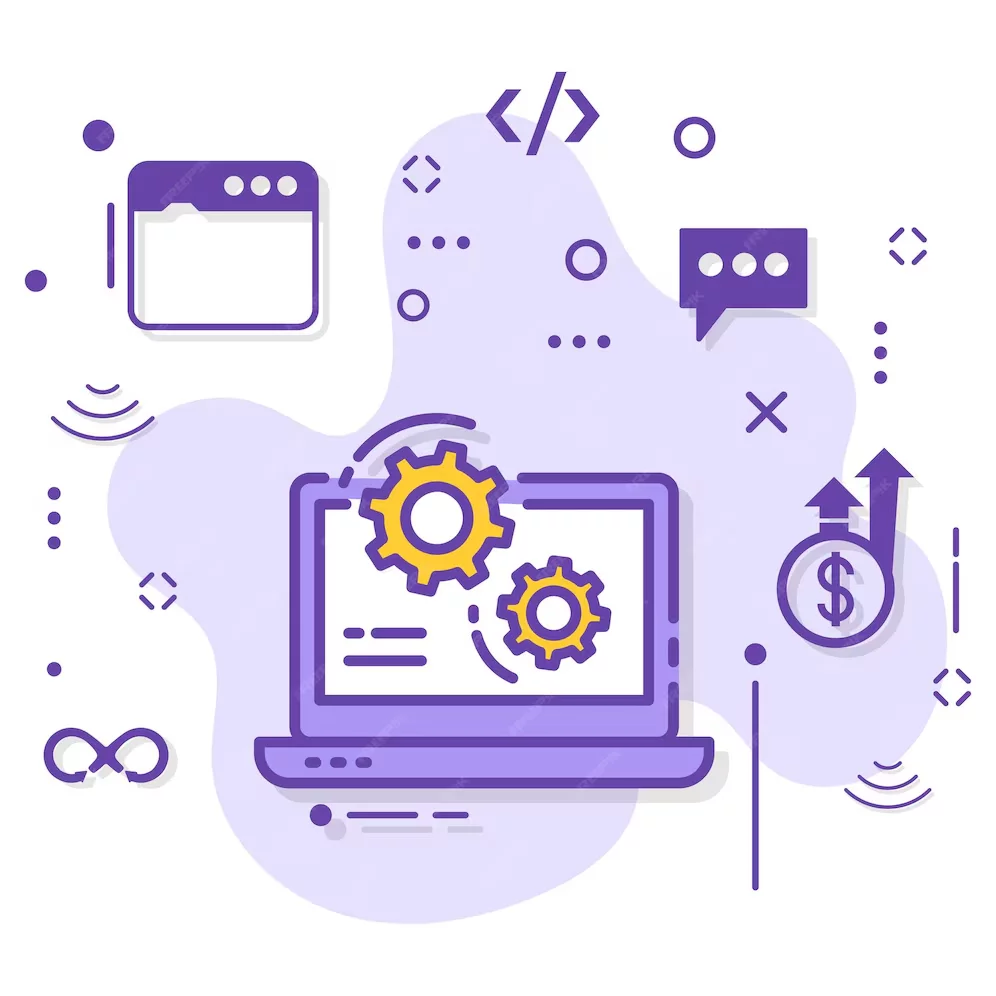In the ever-evolving landscape of digital presence, performance isn’t just a metric—it’s a cornerstone of user satisfaction and business success. Whether you’re running a website, an application, or managing a server infrastructure, the speed and responsiveness of your digital assets can make or break your audience’s experience.
Performance tuning, therefore, emerges as a crucial discipline in the realm of technology. It’s not merely about achieving faster load times or reducing server response times; it’s about optimizing every facet of your digital ecosystem to deliver optimal user experiences while maximizing efficiency and cost-effectiveness.
What is Performance Tuning?

Performance tuning is the systematic process of enhancing system and application efficiency to achieve optimal performance. It involves adjusting hardware, software configurations, and application settings to eliminate bottlenecks and ensure smooth operation. This process is essential across databases, networks, and various applications to improve responsiveness and speed.
Understanding LCP Optimization for Web Performance and SEO Success
Why Performance Tuning Matters:
Performance tuning plays a critical role in today’s fast-paced digital world due to its profound impact on organizational success and operational efficiency.
- Enhanced System Efficiency: Performance tuning optimizes system components to reduce inefficiencies and maximize resource utilization. This results in faster processing times, improved hardware and software performance, and reduced downtime. By enhancing efficiency, organizations can boost productivity and operational throughput.
- Improved User Experience: A finely tuned system delivers a seamless and responsive user experience. Users encounter fewer delays, errors, and interruptions, leading to higher satisfaction and engagement. This is particularly crucial for customer-facing applications where user experience directly influences retention and satisfaction metrics.
- Cost Savings and Resource Optimization: Effective performance tuning identifies and resolves issues that can slow down systems, thereby optimizing resource usage. By maximizing existing resources, organizations can avoid unnecessary hardware upgrades and reduce operating costs. This approach enables systems to handle increased workloads efficiently without additional investments.
- Scalability and Reliability: Tuned systems exhibit scalability and reliability by efficiently accommodating growing demands and workloads. This scalability ensures that systems can expand alongside organizational growth without sacrificing performance. Moreover, reliable systems minimize downtime and failures, ensuring uninterrupted service delivery and operational continuity.
Mastering Website Performance Testing for Optimal Speed and User Experience
Techniques for Performance Tuning:
Performance tuning involves a variety of techniques aimed at optimizing system efficiency and responsiveness across hardware, software, and applications. These techniques are crucial for ensuring that systems operate effectively under varying workloads and meet performance expectations.
A. Hardware Tuning

- Hardware Upgrades (if cost-effective): Upgrading hardware components such as RAM, storage (e.g., SSDs), or CPUs can significantly enhance system performance. Evaluating the cost-effectiveness of these upgrades is essential to justify the investment based on the expected performance gains.
- Resource Allocation (prioritizing critical processes): Effective resource allocation involves configuring system settings to prioritize critical processes. This ensures that essential applications and tasks receive sufficient computing power and memory resources to operate efficiently. Dynamic resource allocation adjusts resource distribution based on workload demands, optimizing performance in real-time.
B. Software Tuning

- Code Optimization: Optimizing code improves efficiency by eliminating redundant operations and enhancing algorithms. Techniques such as refactoring code, minimizing loops, and using efficient data structures reduce execution time and resource consumption, resulting in faster and more responsive applications.
- Database Optimization: Database performance can be optimized through indexing and query tuning. Indexing accelerates data retrieval by organizing data for quick access, while query tuning involves rewriting SQL queries to improve efficiency. These practices minimize database load and ensure faster response times for data access operations.
- Caching Techniques: Implementing caching strategies stores frequently accessed data in memory, reducing the need for repeated database queries or computations. Caching significantly improves application performance by reducing latency and alleviating backend system load, enhancing overall responsiveness.
C. Application Tuning

- Load Balancing (distributing workload across servers): Load balancing distributes incoming application traffic across multiple servers to prevent any single server from becoming overwhelmed. By evenly distributing requests using algorithms that dynamically adjust to traffic changes, load balancing enhances performance and reliability.
- Resource Management: Effective resource management involves configuring memory usage and managing thread pools efficiently within applications. Fine-tuning these settings allows applications to handle more concurrent users and operate effectively under heavy load conditions, ensuring stability and responsiveness.
Site Speed Mistakes to Avoid: Bloggers’ Edition for 2024
Tools and Techniques for Performance Tuning:
Performance tuning encompasses a range of tools and methodologies aimed at optimizing system efficiency and responsiveness. Below, we explore key tools and techniques essential for effective performance tuning.
A. Monitoring Tools

Monitoring tools play a crucial role in real-time performance analysis and bottleneck identification:
- Oracle Enterprise Manager: This comprehensive suite is tailored for monitoring and managing Oracle databases. It provides detailed insights into database operations and resource utilization, facilitating the identification and resolution of performance issues.
- SQL Server Profiler: Specifically designed for SQL Server environments, this tool captures and analyzes SQL Server events. It is instrumental in pinpointing slow-running queries and understanding the impact of SQL operations on overall performance.
- JVM Tools: Tools for monitoring Java applications offer insights into memory usage, garbage collection, and thread activity. By monitoring these metrics, developers can optimize Java application performance effectively.
Optimize or Bust: Performance Budgets to Stay Ahead in Web Development IN 2024
B. Profiling

Profiling techniques focus on identifying and optimizing performance bottlenecks within applications:
- Code Profilers: These tools analyze the runtime performance of applications, highlighting specific methods or functions that consume excessive resources. By optimizing these performance hotspots, developers can enhance overall application efficiency.
- Database Profilers: These tools specialize in identifying slow database queries and transactions. By analyzing query execution plans and optimizing database interactions, developers can significantly improve application performance.
C. User Experience Feedback

Understanding user interactions and experiences is essential for optimizing performance from a user-centric perspective:
- Surveys: Conducting user surveys provides direct feedback on user experience. This feedback is invaluable for identifying performance issues that may not be apparent through technical monitoring alone.
- A/B Testing: By comparing two versions of a web page or application, A/B testing helps determine which version performs better in terms of performance metrics such as load times and user interactions. This empirical approach guides developers in making informed optimizations.
Best Practices for Performance Tuning
Performance tuning is essential for optimizing system efficiency and maintaining reliability. Implementing best practices ensures that your systems operate smoothly and meet performance expectations. Here are key practices to follow:
A. Regular Monitoring and Proactive Tuning
Regular monitoring is critical for identifying performance bottlenecks and inefficiencies early on. Monitoring metrics such as CPU usage, memory utilization, and disk I/O provides insights into system health. Tools like Oracle Enterprise Manager, SQL Server Profiler, and JVM Monitoring Tools are essential for real-time performance analysis.
Proactive tuning involves making adjustments based on observed trends and patterns during monitoring. This preemptive approach helps prevent unexpected downtime and ensures optimal system performance.
Slow Site Speed: Who to Blame-Hosting or Website?
B. Keeping Systems and Tools Up-to-Date
Regularly updating operating systems, applications, and performance tuning tools is crucial. Software updates often include performance enhancements, security patches, and compatibility improvements. Staying current with updates ensures that your systems benefit from the latest optimizations and new features, enhancing overall performance and efficiency.
C. Documentation and Performance Benchmarks
Documenting tuning changes and their impact is essential for transparency and repeatability. Proper documentation includes recording tuning adjustments, reasons for changes, and their observed performance impact. This documentation helps in understanding past decisions and facilitates future tuning efforts.
Performance benchmarks establish a baseline for system performance and measure the effectiveness of tuning adjustments. Comparing benchmark metrics before and after tuning provides quantitative insights into performance improvements and validates tuning efforts.
Learn about the evolution of Core Web Vitals here.
Conclusion:
Effective performance tuning is crucial for achieving optimal system efficiency, reducing downtime, and enhancing user experience. By implementing regular monitoring, proactive tuning practices, and keeping systems up-to-date, organizations can ensure that their systems operate smoothly and efficiently. Following these best practices not only improves performance but also contributes to overall operational stability and reliability in dynamic IT environments.
FAQs on Performance Tuning:
How can I measure the success of performance tuning efforts?
Success in performance tuning can be measured by improvements in key metrics such as response times, throughput, server load, and user satisfaction. Regular performance benchmarks and comparisons against baseline metrics provide tangible evidence of performance gains.
What are some pitfalls to avoid during performance tuning?
Avoid over-optimization, premature optimization, neglecting scalability, ignoring user experience, and neglecting security concerns. It’s essential to balance performance improvements with other critical aspects of system design and operation.
Where can I learn more about performance tuning?
Explore resources such as online tutorials, technical blogs, books on software optimization, and specialized courses or certifications in performance engineering. Engaging with communities and attending conferences focused on performance tuning can also provide valuable insights and networking opportunities.



